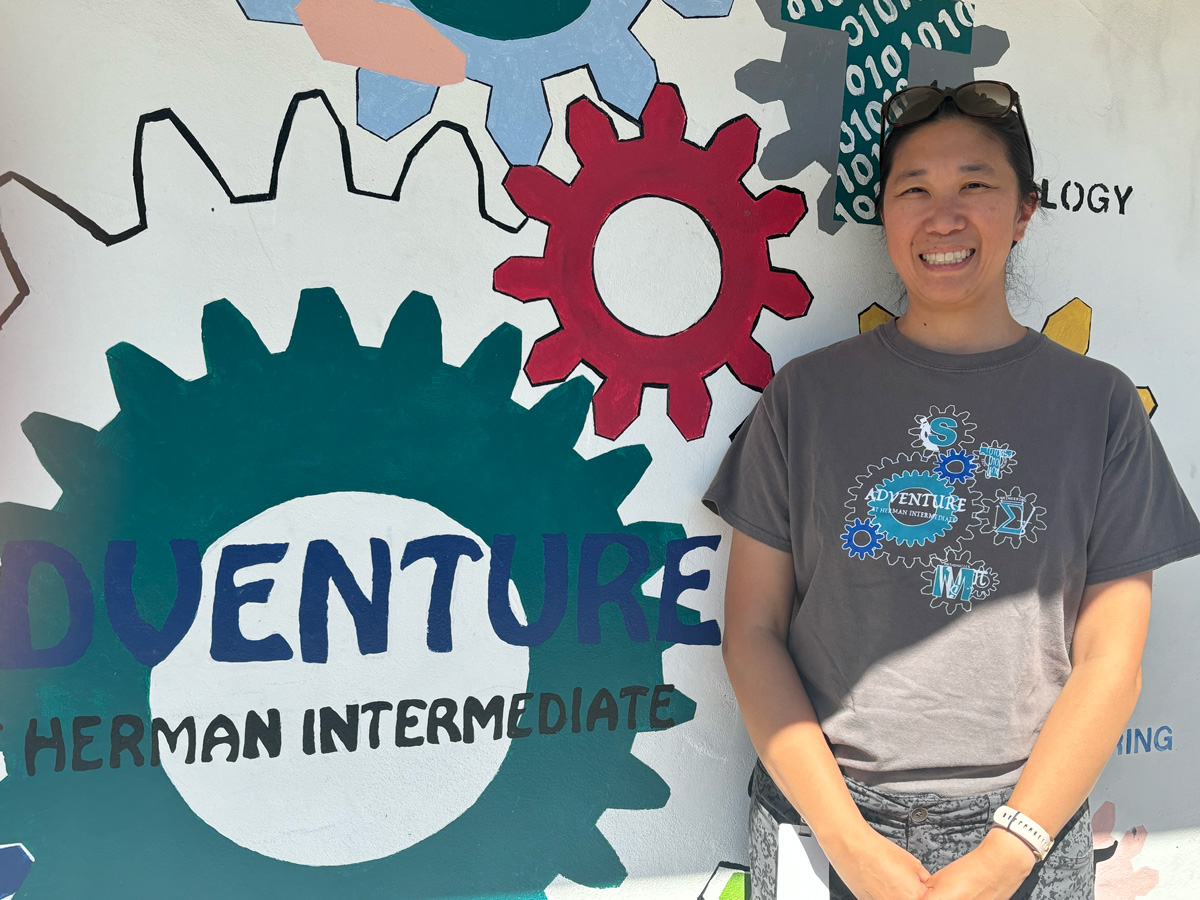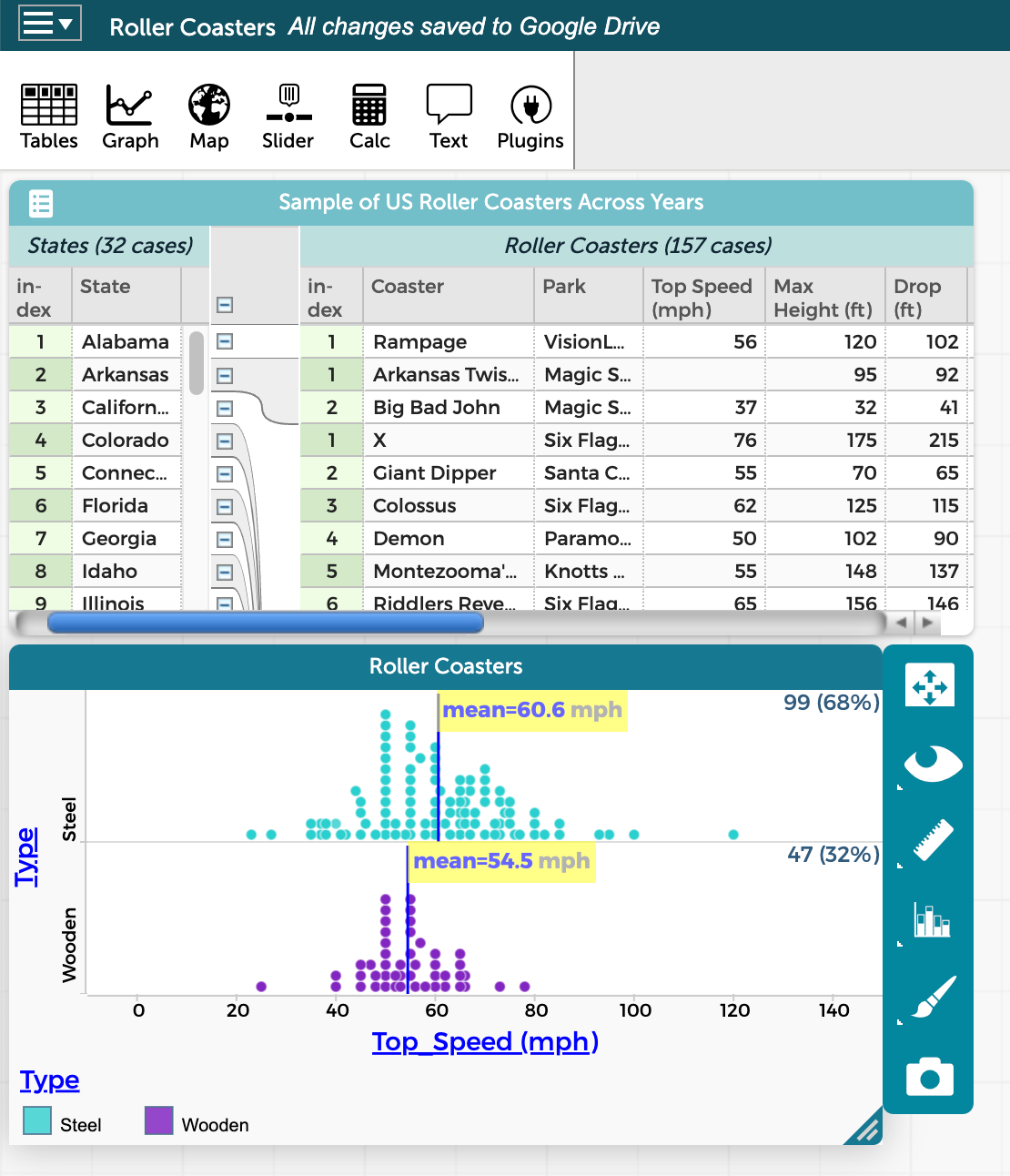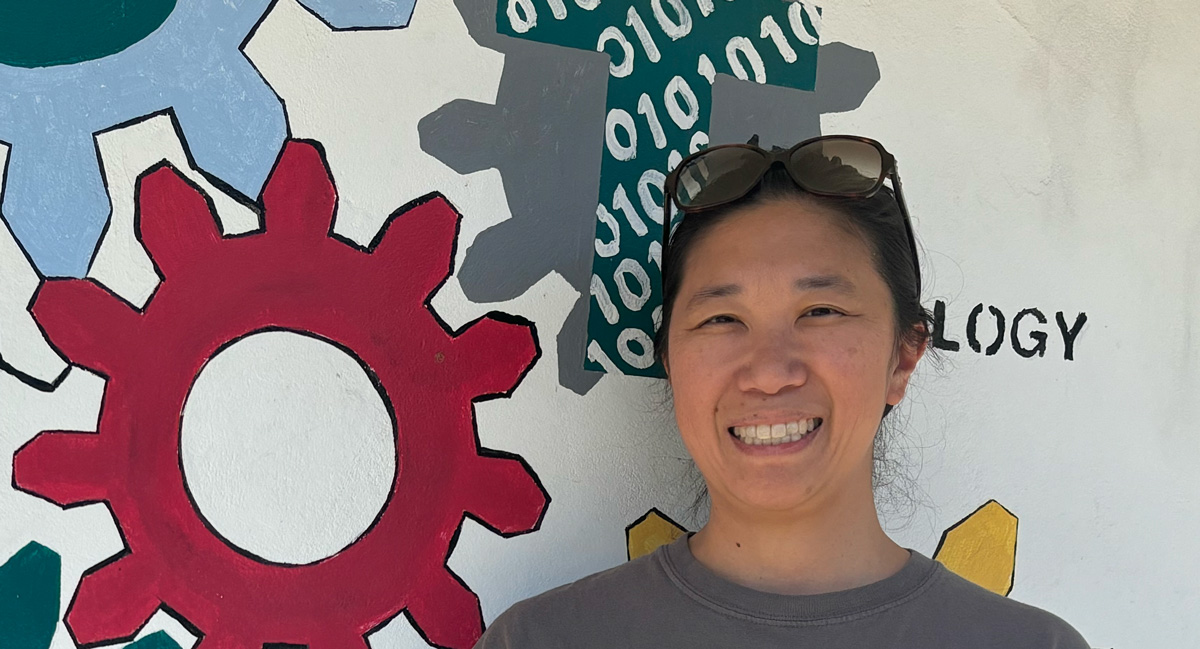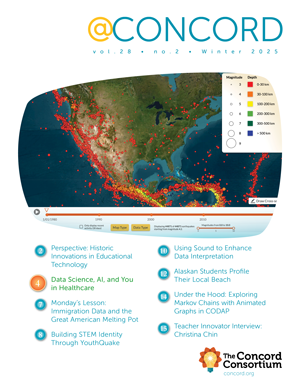Teacher Innovator Interview: Christina Chin
As a child growing up in Silicon Valley, Christina Chin was no stranger to technology. Her father, an “old IBMer who brought home all kinds of gadgets,” gave Christina her first laptop, a bulky briefcase-like device. She still remembers the screen’s distinct monochromatic orange pixels. These days, she’s using considerably more modern technology with her middle school students to get them excited about data science.
Christina did not start out in the classroom, nor did her original career path include computers. Trained in genetics, she began work in pharmaceutical research. She recalls spending her days “isolated in a lab with no windows.” When she decided to pack up her lab coat, she moved to Hong Kong. “I wanted to find my roots,” she laughs.
While overseas, she married and had two children. She also received a master’s degree and teaching credentials through National University, taking online classes in the “infancy of distance learning” when there were assigned readings and discussion forums.
As a program requirement she completed her student teaching in the U.S., but her first teaching job was back in a local Hong Kong school. She also taught in Australian and Singaporean international schools, where she was impressed by the elementary science curriculum. “It spirals. It’s age appropriate. It emphasizes precision with vocabulary.”

Her family eventually moved back to California, where she is now in her fourteenth year teaching fifth through eighth grade. Her STEM school encourages teachers to try new things. When Christina learned about the Boosting Data Fluency project, a collaboration between WestEd and the Concord Consortium designed to increase teacher and student facility with exploring large datasets to learn science and math, she was eager to participate. “Clearly, data science is an up-and-coming thing,” she explains.
But she found that getting her students to explore real-world datasets required stepping stones, including critical support in math. Her fifth graders didn’t know the difference between a line graph and a bar graph, for example. Christina now explicitly teaches vocabulary around patterns and trends. And she starts small, beginning with small datasets and having students graph the points by hand, then moving to Excel, where students practice graph interpretation skills, and finally to CODAP.
Last year, she gave her eighth grade students a large dataset about roller coasters. Because they were tech-savvy, she first had them complete the CODAP tutorial on their own before getting into the roller coaster data. She says her students really enjoyed the drag-and-drop features and were able to easily make graphs to compare the top speeds of wooden and steel roller coasters, for instance. “Their explorations were really organic,” she says, beaming with pride. CODAP, she adds, “really showed students the power of using the right tool to crunch numbers really fast and do something with it.”

wooden and steel roller coasters displayed in CODAP.
Christina equates data fluency with critical thinking and civic action. Her students look at data “all the time” in their science class, and it’s important to her that they understand where the data comes from. By teaching students to understand data, she wants to empower them to stop and ask, “Wait, where is that data coming from? Wait, why are you making that decision? Is that the right decision for us?” Being able to ask questions about and with data is the key to data fluency. Christina is thrilled to boost her students’ abilities.
This material is based upon work supported by the National Science Foundation under Grant No. DRL-2101049. Any opinions, findings, and conclusions or recommendations expressed in this material are those of the author(s) and do not necessarily reflect the views of the National Science Foundation.

